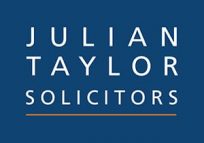1. Calculating weekly pay
On 31 July 2020, the Employment Rights Act 1996 (Coronavirus, Calculation of a Week’s Pay) Regulations 2020 (SI 2020/814) came into force. These provide that if an employer makes a furloughed employee redundant, the employer will need to calculate statutory redundancy pay and statutory notice pay (among other payments listed below) with reference to the employee’s normal pay and not with reference to their reduced furlough pay. Previously, in a limited number of cases for employees whose pay varies with the time of or amount of work, or who have no normal working hours, there was a loophole allowing employers to make statutory payments based on less generous furlough pay (80% of normal pay, capped at £2,500 per month).
The Regulations provide that statutory entitlements based on a week’s pay and connected with termination of employment are not reduced as a result of an employee being furloughed under the Coronavirus Job Retention Scheme (CJRS). The affected entitlements are redundancy pay, statutory notice pay, remuneration for time off to look for employment or arrange training and compensation awards in tribunal including awards for unfair dismissal, failure to provide a written statement of reasons for dismissal, and failure to comply with an order for reinstatement or re-engagement. The Regulations provide a number of special calculations of a week’s pay for those employees who are or have been furloughed, with different calculation options being provided depending upon an employee’s pattern of work. The Regulations also include provisions on how a week’s pay is to be calculated for the purpose of deciding whether an employee is taken to be on short-time for statutory purposes.
The scheme is short term and will cease to apply when the relevant statutory entitlements are no longer affected by an employee having been furloughed.
It is important to note that the new rules apply only to payments from 31 July 2020, so some employees that have already been made redundant will not have been covered. In addition, the normal statutory cap on redundancy payments (on or after 6 April 2020 weekly pay is capped at £538) will still apply, so in many cases the impact of the change will be limited. Similarly if an employee’s notice period is at least one week more than the minimum statutory notice period these calculation provisions do not apply when calculating notice pay, so there is still scope to make lower notice payments in certain cases.
For further general details see
https://www.gov.uk/government/news/new-law-to-ensure-furloughed-employees-receive-full-redundancy-payments
For the calculation details see
https://www.legislation.gov.uk/uksi/2020/814/made
Please do contact us for advice if you need support with your calculations.
2. Further HMRC guidance
Given the evolving nature of the CJRS employers may be concerned about previous claims they have made. On 28 July 2020, HM Revenue & Customs (HMRC) published two new guidance documents for employers on what to do if they have claimed too much or too little under the CJRS (the Errors uide) and the penalties they will face if they fail to report overpayments (the Penalties guide).
The Errors guide
The Errors guide expands upon information that previously appeared in the HMRC Claim guide. In relation to overpayments, it confirms that employers must notify HMRC and make repayments. It sets out the process they should follow to do this and the relevant deadlines (the consequences of failure to comply are provided in the linked Penalties guide). If employers have claimed too little, the Errors guide confirms that they can inform HMRC and amend their claim. Historic claims for the period up to 30 June are now closed. Employers are also reminded that even where they have claimed too little, they must make the correct payments to employees.
The Penalties guide
The Penalties guide confirms that HMRC can recover any overpayment through an income tax charge, with interest and penalties on late repayments. If employers fail to notify HMRC of any overpayment, penalties may be imposed of up to 100% of the overpayment where HMRC believe that the employer’s failure was deliberate and concealed (in accordance with the Finance Act 2020, in force on 22 July 2020).
For further details on the Errors guide see
https://www.gov.uk/guidance/if-youve-claimed-too-much-or-not-enough-from-the-coronavirus-job-retention-scheme
and for the Penalties guide
https://www.gov.uk/government/publications/penalties-for-not-telling-hmrc-about-coronavirus-job-retention-scheme-grant-overpayments-ccfs48
